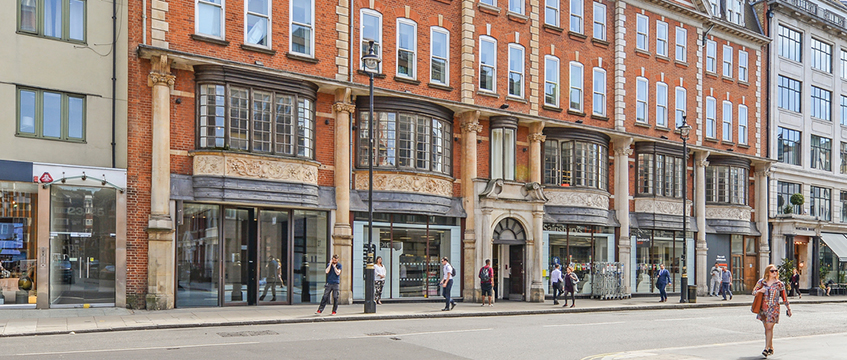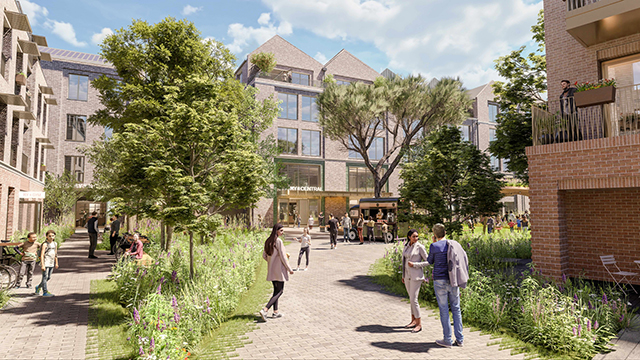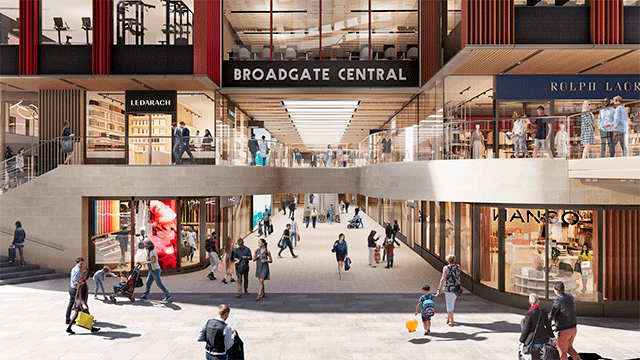When Parisian mayor Anne Hidalgo approved the city’s plans to turn the famous Champs-Élysées into an “extraordinary garden” earlier this month, the announcement turned heads far from the capital.
Westminster City Council’s Elad Eisenstein, who has been tasked with masterminding the recovery of London’s Oxford Street district as it emerges from the pandemic, was one of them. Yesterday, he told a panel discussion on the subject that London could learn from its neighbour across the Channel.
“The launch of that vision is amazing,” he told the panel, which was hosted by the Westminster Property Association and New West End Company and included directors from the Crown Estate, Selfridges and Derwent. “It is beautifully designed, and Paris has always been very strong in pushing big ideas and grand projects forward.”
Paris’ famous avenue, connecting the Place de La Concorde to the Arc de Triomphe, is set to be radically transformed over the next decade. Under the €250m (£225m) plan, hundreds of trees will be planted, traffic will be cut by half, and – it is hoped – more small-scale shops will appear along the avenue’s flanks. The intention, supporters say, is to turn the street into somewhere Parisians want to visit, rather than the tourist destination it had become before the pandemic.
In this case, Eisenstein said, the devil is not in the detail – rather the clarity of the vision. “The focus strategically is not about the traffic, it is really about the idea,” he said. “When the idea is strong, it can help you corral people around you. It is not even going to deliver a traffic-free Champs-Élysées, but it is still amazing, and it brings people together.”
Oxford Street makeover
His comments come weeks before the publication of further details of Oxford Street’s own radical makeover plan, which authorities hope will make it more sustainable and bring Londoners back to Europe’s busiest shopping street.
However, in recent years, turnaround efforts have suffered several false starts, brought about in part by dissent from locals over the danger of diverting traffic through surrounding residential streets, as well as the upheaval wrought by the pandemic.
Eisenstein said: “You need to create something that people can stand behind, regardless of the detail, which none of us are going to agree on 100%.”
Meanwhile, other panel members were frank in their criticism of the area in its current state, after it emerged this month that a number of retailers would be forced to close their flagship Oxford Street stores, including Debenhams and Topshop.
“There is such an imperative right now in the context of the horrific few months that we have just had, and continued challenges,” said James Cooksey, London director at the Crown Estate.
“We need to create an environment that is fantastic for Londoners and for the domestic audience to return to first, and then create that amazing wow… For some time, if we are honest, I would imagine [visitors have been] significantly underwhelmed.”
‘Declining for a number of years’
Tim Reade, Selfridges’ head of asset management, said: “People talk about Oxford Street as being world-class, but I think we have got to accept that is not the case at the moment.
“It has been declining for a number of years… The good news is we are still on the world stage, but there is a huge amount of work for us to do.”
The plans drawn up by Parisian authorities “give a sense of the level of ambition that is required”, he added. “If we create a really good environment then investment and viability is going to look after itself, the crop of occupiers will automatically improve, and the public’s engagement will improve along with it.”
To send feedback, e-mail alex.daniel@egi.co.uk or tweet @alexmdaniel or @estatesgazette











